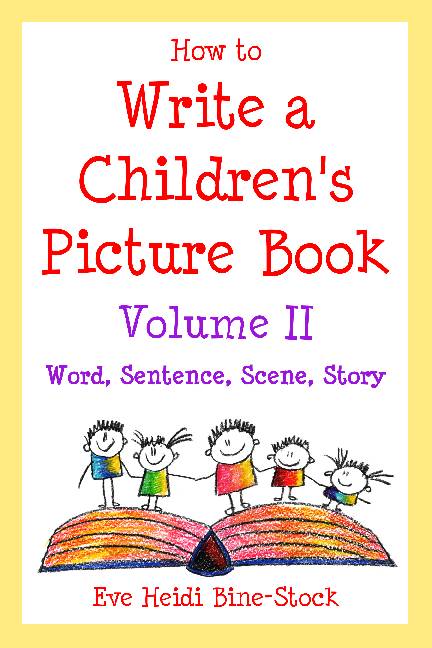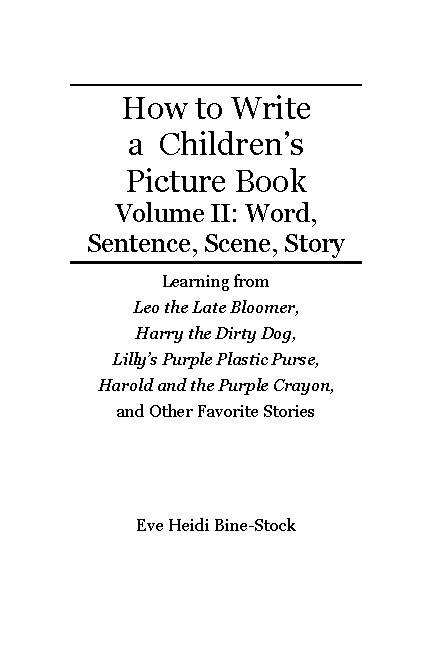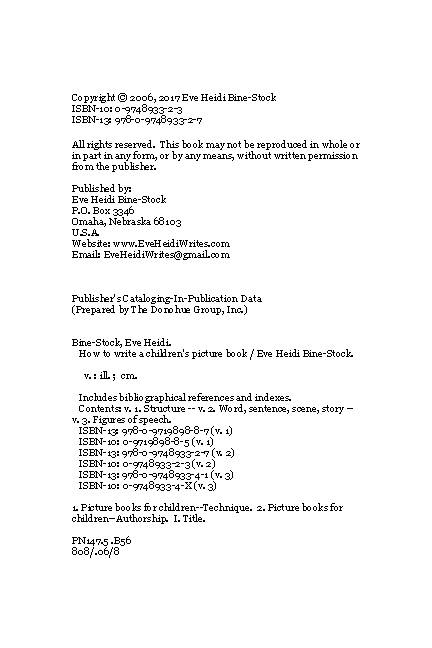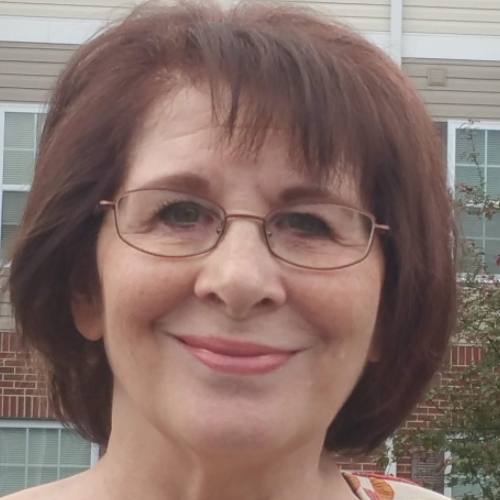Details
Pages
6 Pages
Subject
Writing
Product
Digital
Grade
9th, 10th, 11th, 12th, Adult Ed, Higher Ed
Resource Type
eBooks
Description
"How To Write A Children's Picture Book" is an impressive trilogy of instructional books by children's author and illustrator Eve Heidi Bine-Stock that provides other aspiring children's authors with sound, practical, time-tested advice on constructing a picture book story for children that will hold their interest from beginning to end.
Volume 1 is devoted to the structure of writing and draws examples from a series of popular and successful children's books that include 'The Very Hungry Caterpillar', 'Where the Wild Things Are', 'Sylvester and the Magic Pebble', and several other children's stories. Applicable to both concept books and picture storybooks, "How To Write A Children's Picture Book: Structure" demonstrates and documents that being able to properly structure a story is the key to writing a picture book that will appeal to children preschool through first grade.
Volume 2 focuses upon the use of words, sentences, scenes, and the story when developing a successful picture book for children. Examples and illustrations are drawn from such picture book favorites as 'Harry the Dirty Dog', Harold and the Purple Crayon', 'Frog and Toad Are Friends', and several other well known picture books, in order to help aspiring picture book authors understand the critical role of word choice and storytelling strategies for a picture book's appeal to its intended and age appropriate readership.
Volume 3 explores the importance and usage of figures of speech when writing the text for a child's picture book. Illustrative examples are taken from a series of successful picture books that include 'Lyle, Lyle, Crocodile', 'Where the Wild Things Are', 'Caps for Sale', and 'Fish is Fish'. The deft and careful inclusion of figures of speech are more that just the occasional use of similes, onomatopoeia, alliteration, hyperbole and personification. They are clever, subtle, sophisticated expressions that can make characters and stories truly memorable and raise the level of a good picture book to the status of a great one " a picture book that will endure in popularity through many generations of young readers.
To each volume of this truly outstanding and unique series of 'how to' books specializing in the techniques of crafting picture book stories, Eve Heidi Bine-Stock brings her own particular expertise in communicating her instructions, advice, recommendations, and observations, making "How To Write A Children's Picture Book: Structure"; "How To Write A Children's Picture Book: Word, Sentence, Scene, Story"; and "How To Write A Children's Picture Book: Figures of Speech" an indispensable, unique, and enthusiastically recommended instructional reference set specifically intended for dedicated authors wanting to hone their craft in the deceptively demanding field of picture books for children. -- James A. Cox, Midwest Book Review
Volume 1 is devoted to the structure of writing and draws examples from a series of popular and successful children's books that include 'The Very Hungry Caterpillar', 'Where the Wild Things Are', 'Sylvester and the Magic Pebble', and several other children's stories. Applicable to both concept books and picture storybooks, "How To Write A Children's Picture Book: Structure" demonstrates and documents that being able to properly structure a story is the key to writing a picture book that will appeal to children preschool through first grade.
Volume 2 focuses upon the use of words, sentences, scenes, and the story when developing a successful picture book for children. Examples and illustrations are drawn from such picture book favorites as 'Harry the Dirty Dog', Harold and the Purple Crayon', 'Frog and Toad Are Friends', and several other well known picture books, in order to help aspiring picture book authors understand the critical role of word choice and storytelling strategies for a picture book's appeal to its intended and age appropriate readership.
Volume 3 explores the importance and usage of figures of speech when writing the text for a child's picture book. Illustrative examples are taken from a series of successful picture books that include 'Lyle, Lyle, Crocodile', 'Where the Wild Things Are', 'Caps for Sale', and 'Fish is Fish'. The deft and careful inclusion of figures of speech are more that just the occasional use of similes, onomatopoeia, alliteration, hyperbole and personification. They are clever, subtle, sophisticated expressions that can make characters and stories truly memorable and raise the level of a good picture book to the status of a great one " a picture book that will endure in popularity through many generations of young readers.
To each volume of this truly outstanding and unique series of 'how to' books specializing in the techniques of crafting picture book stories, Eve Heidi Bine-Stock brings her own particular expertise in communicating her instructions, advice, recommendations, and observations, making "How To Write A Children's Picture Book: Structure"; "How To Write A Children's Picture Book: Word, Sentence, Scene, Story"; and "How To Write A Children's Picture Book: Figures of Speech" an indispensable, unique, and enthusiastically recommended instructional reference set specifically intended for dedicated authors wanting to hone their craft in the deceptively demanding field of picture books for children. -- James A. Cox, Midwest Book Review
"How To Write A Children's Picture Book" is an impressive trilogy of instructional books by children's author and illustrator Eve Heidi Bine-Stock that provides other aspiring children's authors with sound, practical, time-tested advice on constructing a picture book story for... more













